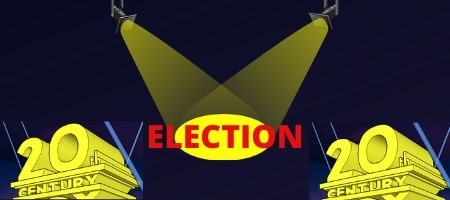They got it wrong last time … in a big way. They crunched the numbers and kept coming up with the wrong answer over and over. Now, nationwide pollsters are digging into the statistical weeds with more numbers and lingo than someone with a doctorate could interpret. But it came down to one thing in 2016, and you don’t need an advanced degree in election analysis to understand that 2020 hinges on one thing – voter turnout.
 In a long – as in marathon-length – article for The New Republic, political forecasting analyst Rachel Bitecofer, waxes eloquent about the upcoming presidential election. Despite a not terribly concealed bias against the president, she makes many salient points about the upcoming election that has everyone on pins and needles, but her overall thesis can be boiled down to only one fact. To wit:
In a long – as in marathon-length – article for The New Republic, political forecasting analyst Rachel Bitecofer, waxes eloquent about the upcoming presidential election. Despite a not terribly concealed bias against the president, she makes many salient points about the upcoming election that has everyone on pins and needles, but her overall thesis can be boiled down to only one fact. To wit:
Negative partisanship is effective in getting people to vote. Simply put, this is the politics of despising the other party or opposing candidate enough to motivate people to go to the polls. Bitecofer found in her research that “Seventy-one percent of Republicans and 55 percent of Democrats now regard the opposition party as a force that stokes baleful national decline.” This dogged dislike for the other side turns into that all-important number of who will ultimately exercise their franchise November 3, 2020.
In reviewing the 2016 polling data, it was “The Non-Voters Who Decided The Election: Trump Won Because Of Lower Democratic Turnout,” as Forbes so aptly headlined just a few days following Trump’s surprising victory. This tells all because, whether it’s low turnout for the opposition or high turnout for your side, in the end, it’s just plain turnout with a capital “T” that drives the bus that leads to 1600 Pennsylvania Avenue.
 If the president is to win again, this will be his ticket to the oval office, and his campaign people know this all too well. They focus on turnout, publish the numbers, and register rally attendees to vote for good reason. As I reported in another recent article for Liberty Nation, the data regarding those who show up for Trump campaign rallies is, thus far, very favorable in this crucial area.
If the president is to win again, this will be his ticket to the oval office, and his campaign people know this all too well. They focus on turnout, publish the numbers, and register rally attendees to vote for good reason. As I reported in another recent article for Liberty Nation, the data regarding those who show up for Trump campaign rallies is, thus far, very favorable in this crucial area.
In Kentucky, those who voted once or less in the last four elections totaled 28%. In Mississippi, it was 24%, and in Arizona, 26% of the people who came to the Trump extravaganza in Phoenix did not vote in 2016. Rally by rally, Trump’s people track these folks and count those whom they register. Of course, not all these people may actually go to the poll on election day. But what if a portion of them do? All that must happen for a Trump win is for Democrats to stay home and Republicans – along with these newbies – to vote early, though not often, unless they’re in Chicago, of course.
All kidding aside, the raw statistics are not in the president’s favor. The electorate, as Bitecofer accurately states, is not even-steven: “[As] currently constituted, there are more potential Democratic voters out there than there are Republican, and not just in California. There are more in the Midwest and the Sun Belt. There are so many more in Virginia and Colorado that both states have moved off the swing state map.”

(Photo by Nathan Howard/Getty Images)
But – and this is a huge but – if one goes back to the original premise of negative partisanship, one must ask who is motivated to go to the polls and who is motivated to stay home and nuke their dinner while watching the tube?
First of all, the Democrats must – as in absolutely must – nominate someone who excites them. So far, that appears to be Bernie Sanders, but for a large swath of the American public, as Chris Matthews thunders on his Hardball program night after night – Sanders is a big turn off. This isn’t just because moderate Dems don’t like him. No, what Bernie brings to the table is a huge (as the president would say) group of Americans who don’t just dislike the democratic socialist – but fear him.
And that, dear readers, is just the ticket to a massive negative partisanship vote in favor of the president. The final sentence of Ms. Bitecofer’s article in The New Republic says just that: “Partisanship is a hell of a drug—especially when it’s cut with a heavy dose of existential fear.”
Indeed, it is, and this is precisely why America is likely to give Mr. Trump four more years.
~
Read more from Leesa K. Donner.




